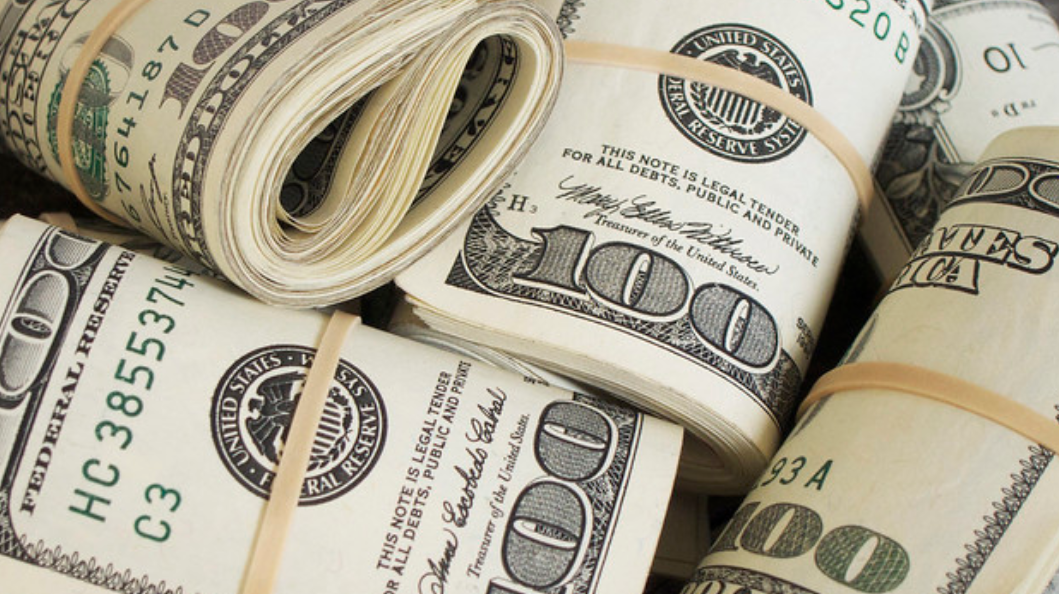Understood properly, inflation is not a general increase in prices but is an increase in the money supply “out of thin air” which brings about the impoverishment of wealth generators. When inflation is seen as a general increase in prices, then anything that contributes to price increases is called inflationary. In this framework, not only does the central bank have nothing to do with inflation, on the contrary, the bank is regarded as an inflation fighter. But, on this Ludwig von Mises wrote, To avoid being blamed for the nefarious consequences of inflation, the government and its henchmen resort to a semantic trick. They try to change the meaning of the terms. They call “inflation” the inevitable consequence of inflation, namely, the rise in prices. They are
Topics:
Frank Shostak considers the following as important: 6b) Mises.org, Featured, newsletter
This could be interesting, too:
Nachrichten Ticker - www.finanzen.ch writes Die Performance der Kryptowährungen in KW 9: Das hat sich bei Bitcoin, Ether & Co. getan
Nachrichten Ticker - www.finanzen.ch writes Wer verbirgt sich hinter der Ethereum-Technologie?
Martin Hartmann writes Eine Analyse nach den Lehren von Milton Friedman
Marc Chandler writes March 2025 Monthly
 Understood properly, inflation is not a general increase in prices but is an increase in the money supply “out of thin air” which brings about the impoverishment of wealth generators.
Understood properly, inflation is not a general increase in prices but is an increase in the money supply “out of thin air” which brings about the impoverishment of wealth generators.
When inflation is seen as a general increase in prices, then anything that contributes to price increases is called inflationary. In this framework, not only does the central bank have nothing to do with inflation, on the contrary, the bank is regarded as an inflation fighter.
But, on this Ludwig von Mises wrote,
To avoid being blamed for the nefarious consequences of inflation, the government and its henchmen resort to a semantic trick. They try to change the meaning of the terms. They call “inflation” the inevitable consequence of inflation, namely, the rise in prices. They are anxious to relegate into oblivion the fact that this rise is produced by an increase in the amount of money and money substitutes. They never mention this increase. They put the responsibility for the rising cost of living on business. This is a classical case of the thief crying “catch the thief”. The government, which produced the inflation by multiplying the supply of money, incriminates the manufacturers and merchants and glories in the role of being a champion of low prices. [3]
Historical origins of inflation
Historically, inflation originated when a country’s ruler such as king would force his citizens to give him all their gold coins under the pretext that a new gold coin was going to replace the old one. In the process of minting new coins, the king would lower the amount of gold contained in each coin and return lighter gold coins to citizens.
Because of the reduced weight of gold coins that were returned to citizens, the ruler was able to generate extra coins that were employed to pay for his expenses. What was passing as a gold coin of a fixed weight was in fact a lighter gold coin. On this Rothbard wrote,
More characteristically, the mint melted and re – coined all the coins of the realm, giving the subjects back the same number of “pounds” or “marks”, but of a lighter weight. The leftover ounces of gold or silver were pocketed by the King and used to pay his expenses. [1]
Note that what we have here is an inflation of coins i.e. an increase in the quantity of coins brought about by the ruler making the gold coins lighter. The extra gold coins that the ruler was able to generate could be regarded as emerged out of “thin air”. As a result, this enabled the ruler the channeling of goods from citizens to himself.
Furthermore because of the increase in the quantity of coins (inflation of coins) prices in terms of coins now go up (more coins are being exchanged for a given amount of goods). Note however, that price increases is just a symptom here.
How money out of “thin air” undermines the proper role of money
Observe that by fulfilling, the role of the medium of exchange, money enables something to be exchanged for it and this in turn enables the received money to be exchanged for something else. That is something is exchanged for something else by means of money.
Thus, a producer of goods exchanges his produce for money and then exchanges the obtained money for the goods of other producers. Note again that what we have here is an exchange of something for something with the help of money.
Now when money is generated out of “thin air” this sets an exchange of nothing for something. By means of inflation of money out of “thin air” goods or wealth are diverted from wealth generators to the holders of money out of “thin air”. This in turn weakens wealth generators and in turn weakens the process of wealth formation.
To clarify this point further consider a counterfeit money, which was generated by a forger. The forged money looks exactly as the genuine money. Observe that honest money is obtained by selling some useful goods for it.
In contrast, no goods were exchanged to obtain the phony money. (The forger just printed the money hence the counterfeit money emerged out of “thin air”).
Once the forged money is exchanged for goods this results in nothing being exchanged for something. This leads to the channeling of goods from those individuals that have produced goods to the forger.
In this sense, increases in money out of “thin air” always set in motion an exchange of nothing for something. Alternatively, we can also say that money out of “thin air” leads to consumption without the preceding production of goods.
Observe that the act of wealth channeling is going to take place regardless of whether the growth rate of money out of “thin air” is above or below the growth rate in real economic activity, or whether it is proceeding along a constant growth path.
Again, as long as there is an increase in the money out of “thin air”, this will set in motion an exchange of nothing for something i.e. this will give rise to consumption that is not supported by the preceding production.
Money out of “thin air” in the modern world
On a gold standard, an increase in the money supply unbacked by gold constitutes an increase in the money supply out of “thin air” [2]. In the modern world, the money supply is without any gold backup. Hence, any increase in the money supply constitutes an increase in the money supply out of “thin air”.
Real incomes of wealth generators decline, not because of general increase in prices as popular thinking has it, but because of increases in the money supply that set in motion an exchange of nothing for something.
When money supply increases i.e. created out of “thin air”, the holders of the newly generated money can channel goods to themselves without contributing to the production of goods. As a result, wealth generators who have contributed to the production of goods discover that there are now fewer goods left in the pool.
Once wealth generators have fewer goods left at their disposal, this is going to hurt the formation of real savings, all other things being equal. As a result, real economic growth is going to come under pressure. General increases in prices, which follow increases in money supply, point to an erosion of real wealth. Price increases by themselves however do not cause this erosion.
Increase in the supply of gold and inflation
According to some commentators, on a pure gold standard an increase in the supply of gold is also likely to generate all the distortions associated with inflation. But this is not going to be the case since an increase in the supply of gold constitutes an increase in wealth and not an increase in money out of “thin air.”
Gold contributes to the wellbeing of individuals. Individuals use gold as jewelry and in various industrial applications. In this sense, gold is part of the pool of wealth. If for some reasons, there is an increase in the production of gold and if this trend were to persist, the exchange value of gold is likely to be subject to a persistent decline versus other goods, all other things being equal.
Note however, that since the suppliers of gold have increased the production of a useful commodity the increase in the supply of gold does not generate an exchange of nothing for something. In this sense, the increase in the supply of gold does not generate harmful effects as the increase in money out of “thin air” does.
[1] Murray N. Rothbard – What Has Government Done to Our Money? Libertarian Publishers January 1964.
[2] See below why an increase in the supply of gold is in fact an increase in wealth.
[3] Ludwig von Mises, Economic Freedom and Interventionism, the Foundation for Economic Education p.94.
Tags: Featured,newsletter








